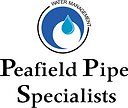Imagine a world without hydrostatic pressure testing. Pipes would leak, tanks would rupture, and countless accidents would occur. Hydrostatic pressure testing is the unsung hero of industry, ensuring the safety and integrity of vital structures. In this article, we dive deep into the world of hydrostatic pressure testing to uncover the most common problems it detects. From leaks to structural weaknesses, we explore the critical issues that this testing method helps identify.
The Pressure’s On: Leaks and Their Detection
Leaking pipes can be a costly nightmare, both in terms of finances and safety. Hydrostatic pressure testing is a method that applies pressure to pipes, containers, and vessels to check for leaks. The common problems it detects include:
1. Pinhole Leaks: These tiny, often microscopic leaks can gradually weaken the structure, leading to catastrophic failures. Hydrostatic pressure testing identifies even the smallest pinhole leaks.
2. Cracks: Cracks can develop over time due to corrosion, stress, or manufacturing defects. The application of hydrostatic pressure reveals these weaknesses, preventing potential disasters.
3. Porosity: Poor welding or manufacturing can result in porosity, which is a network of small holes within the material. Hydrostatic pressure testing exposes these imperfections that might otherwise go unnoticed.
Structural Integrity: Weak Points in the System
Pressure vessels, tanks, and pipelines are integral to industries like oil and gas, chemicals, and manufacturing. Ensuring their structural integrity is paramount. Hydrostatic pressure testing uncovers common issues related to structural weaknesses:
1. Material Flaws: Even the highest-quality materials can have flaws. Hydrostatic pressure testing reveals material defects such as inclusions, laminations, or impurities that weaken the structure.
2. Weld Integrity: Welds are critical points of potential weakness in any structure. Hydrostatic pressure testing detects problems in the weld, including incomplete penetration or weld cracks, ensuring that they meet safety standards.
3. Fatigue Cracks: Over time, repeated pressure cycles can cause fatigue cracks to develop in a structure. Hydrostatic pressure testing applies maximum stress, helping to identify these cracks before they become a major concern.
Under Pressure: Detecting Design and Manufacturing Errors
The success of hydrostatic pressure testing lies in its ability to identify not only current problems but also potential ones related to design and manufacturing:
1. Design Flaws: Hydrostatic pressure testing can reveal design flaws such as weak points or excessive stress concentrations. Identifying these flaws early can save significant time and resources in the long run.
2. Tolerance Issues: Manufacturing processes can sometimes result in components that do not meet the intended specifications. Hydrostatic pressure testing can expose these tolerance issues before the final product is put into use.
3. Assembly Errors: Incorrectly assembled components can compromise the entire system. Hydrostatic pressure testing ensures that the assembly process has been executed correctly.
Regulatory Compliance: Meeting Industry Standards
Hydrostatic pressure testing isn’t just about identifying problems; it’s also about ensuring compliance with industry standards and regulations:
1. ASME Boiler and Pressure Vessel Code: In the United States, the ASME code sets the standard for pressure vessel design, construction, and maintenance. Hydrostatic pressure testing is a crucial step in meeting these rigorous requirements.
2. API Standards: The American Petroleum Institute (API) has established industry standards for oil and gas equipment. Hydrostatic pressure testing is a key element in ensuring compliance with these standards.
3. International Codes: Globally, various countries have their own codes and regulations governing pressure equipment. Hydrostatic pressure testing is essential for meeting these international requirements.
Safety First: Preventing Catastrophic Failures
One of the primary objectives of hydrostatic pressure testing is to prevent catastrophic failures that can lead to injuries, environmental damage, and financial losses:
1. Avoiding Accidents: Identifying and addressing problems through hydrostatic pressure testing prevents accidents that can harm personnel, damage equipment, and cause environmental disasters.
2. Reducing Downtime: Detecting issues early minimizes unplanned downtime, ensuring that operations can continue smoothly without costly interruptions.
3. Protecting the Environment: Preventing leaks and ruptures helps protect the environment by avoiding the release of hazardous substances.
The Future of Hydrostatic Pressure Testing
As technology advances, so does the field of hydrostatic pressure testing. Innovations such as automated testing, remote monitoring, and advanced materials are shaping the future of this critical industry practice.
In conclusion, hydrostatic pressure testing is a cornerstone of safety and reliability in various industries. By detecting common problems such as leaks, structural weaknesses, design and manufacturing errors, and ensuring regulatory compliance, this method helps prevent catastrophic failures and safeguards both human lives and the environment. As technology continues to evolve, hydrostatic pressure testing will remain at the forefront of ensuring the integrity of critical infrastructure.
